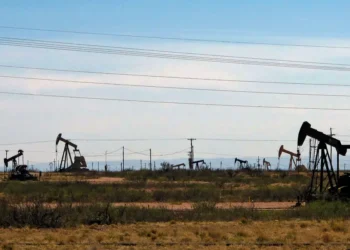THE BREATH OF THE GODS: The History and Future of the Wind, by Simon Winchester
One summer, I worked in southern France, in a town that is the regular victim of the mistral — a punishing, north-northwesterly wind that blows throughout the year. Each day as I pedaled home from work, a howling gale blasted grit into my face and often brought my bike to a standstill. That painful three-mile commute remains my most vivid recollection of the period.
As Simon Winchester writes in his delightful new book, “The Breath of the Gods,” these invisible currents of air shape our lives in myriad ways. A peripatetic polymath who has written books about everything from the Oxford English Dictionary to the San Francisco earthquake to a journey up the Yangtze River, Winchester weaves geology, meteorology, etymology and history into a jaunty survey of wind’s incarnations and permutations.
Wind, he argues, made possible the age of exploration and altered the course of civilizations. It has inspired great feats of engineering. It has also caused suffering, and, in the case of the mistral, has allegedly driven men to madness. “An eruption of domestic anger — even the murder of a spouse — can be blamed on the endless frigid shudderings of a mistral in full spate,” Winchester writes of these blasts, caused by air funneling through the Rhone Valley after the collision of two pressure systems off Spain and Italy. “The wind made me do it, in other words, has some value as a defense.”
Human beings have been trying to grasp the mechanisms of wind for millenniums. Sumerians attributed it to four deities — three brothers and a sister. The Finns worshiped a blacksmith god who controls the elements.
Modern scientists point to an empirical truth: We live on a planet in constant motion and mutation. As Winchester presents it, sun-heated tropical air rises constantly and moves north and south toward the polar regions, allowing cooler air to rush in and fill the vacuum.
This global air circulation takes the form of trade winds and jet streams, all bouncing off mountain ranges that act “like the ice walls of a luge run.” The vagaries of these churning air masses have been responsible for some of mankind’s most consequential tipping points. A sudden westerly wind helped destroy the Spanish Armada in 1588 — probably saving Queen Elizabeth and her Protestant countrymen from conquest by the Catholic King Philip II. In 1986, southeasterly winds bearing radioactive particles alerted the world to the Chernobyl disaster, exposing the moral bankruptcy of the Soviet regime.
Winchester serves up memorable portraits of figures who devoted their lives to harnessing the wind. James Blyth, a Glasgow engineering professor, crafted rotating sails that turned a series of spindles linked to a direct current generator, producing the world’s first “wind engine.” The oceanographer Walter Munk, fascinated by the interplay of wind and waves, selected June 6, 1944, as the ideal moment for the Allied invasion of Europe.
The wind can also be disastrous when not harnessed properly. The most spectacular example was the Dust Bowl of the 1930s, caused by the plowing up of the grasses that blanketed the High Plains. Drought followed by winds sent “rolling clouds of black dust, half a mile high thundering out of the west” in what Winchester calls a “barrage of nature at its worst.”
Winchester’s book meanders at times, and there are inevitable omissions. I would have liked to see at least some mention of Henry Piddington, a mid-19th-century British scientist in Bengal whose predictive studies of cyclones and storm surges earned him the title “the Cassandra of climate science.”
Winchester goes into detail about the 1945 Allied firebombing of Tokyo, and the updrafts of superheated air that generated gale-force winds. But he makes no mention of the natural disaster that presaged the Allied bombing campaign: the 1923 Great Kanto Earthquake, when what onlookers called a “fire tornado” blew through a field packed with refugees and incinerated 44,000 people in two minutes.
And though references to Winchester’s own adventurous life are fascinating, they sometimes come off as humble brags. Writing about his seafaring experience, he apologizes for “the precious little oceanic sailing I have done — just a few thousand miles, mainly in the Indian Ocean, in the 1980s” as “a very junior crew member aboard a seven-ton schooner.”
But this is a thoroughly enjoyable book, brimming over with historical nuggets and contemplations about the future. At the summit of New Hampshire’s Mount Washington, where the wind once measured 231 miles per hour, the highest speed ever recorded, Winchester encounters a freakish calm.
He wonders whether this could be evidence of “the Great Stilling,” a supposed decline of wind velocity around the world that, some meteorologists believe, could be “vastly consequential for life on Planet Earth.” The data, however, are inconclusive, and some experts suggest that in fact the wind is blowing harder than ever. For all the attempts to understand it, wind remains intangible, invisible — and ultimately unpredictable.
THE BREATH OF THE GODS: The History and Future of the Wind | By Simon Winchester | Harper | 406 pp. | $35
The post The Answer? According to Simon Winchester, It’s Blowing in the Wind. appeared first on New York Times.




